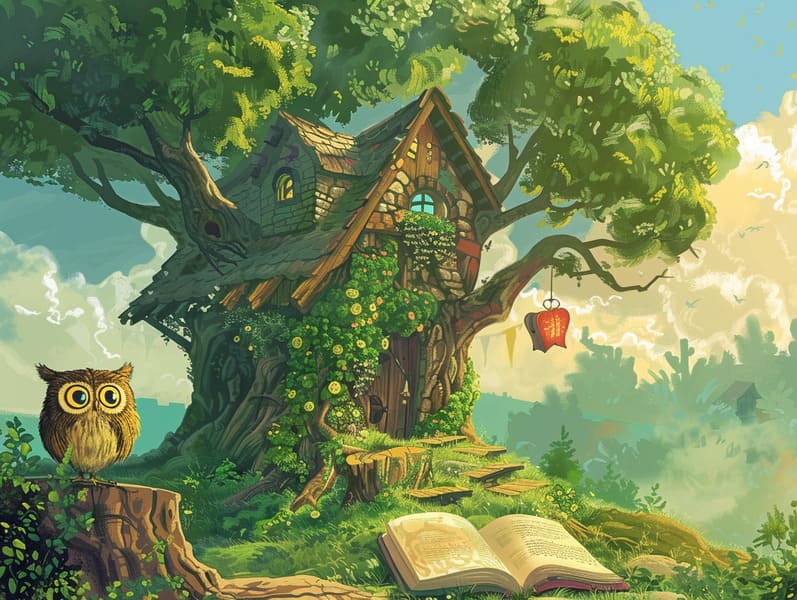
Ancient fairy tales have legendary status. These narratives have been relayed from one generation to the next long before they were ever published. They arose from a variety of societies, including European traditions. They were initially passed along among elders, often carrying themes and messages related to the societal norms and beliefs of the time.
The renowned Brothers Grimm, Jacob and Wilhelm, were among the first to collect many of these beloved narratives. Their anthology, "Grimm's Folk Tales," included stories like "The Story of Cinderella," "The Story of Hansel and Gretel," and "Snow White," which have since become hallmarks in the world of traditional fairy tales. Similarly, the Danish author's enchanting stories, such as "The Sea Maid," and "The Ugly Duckling," have floated into hearts worldwide, cementing their place in the pantheon of classic fairy tales.
Despite being ancient, these stories remain as impactful as ever, especially as bedtime stories for kids. These delightful tales are now available in diverse formats, including vividly illustrated books, fantastical animations, and online storybooks.
Their continued relevance can be attributed to several delightful features:
Valuable Lessons: Traditional fairy tales often present important moral lessons. Fairy tales like "The Tale of the Boy Who Cried Wolf" teach the virtue of being truthful, while "The Hare and the Tortoise" highlight the qualities of persistence and unpretentiousness. These stories offer young readers clear distinctions between truth and falsehood, guiding their moral compass in a gentle yet deep way.
Empathy and Understanding: Traditional fairy tales frequently feature protagonists facing challenges and struggles, motivating kids to comprehend with their struggles and celebrate their triumphs. For instance, "The Story of Beauty and the Beast" demonstrates the merit of looking beyond appearances to comprehend the inner being of a individual, fostering perception and understanding.
Cultural Recognition: Many fairy tales are infused with the cultural contexts from which they sprang. Discovering these tales can provide intriguing perspectives into different ways of life, developing a sense of cultural insight and discernment.
Creativity and Fantasy: The magical elements in traditional fairy tales—supernatural elements—fire up children’s dreaming abilities. These stories carry readers to otherworldly realms, inspiring creative ideas and a sense of marvel that lasts a lifetime.
Classic fairy tales are not only charming but also illuminating. They serve as entrancing tools in strengthening various brain and heart skills in the young. When traditional fairy tales are voiced, they improve language proficiency by bringing new language and elaborate sentence structures. This practice also nurtures hearing perception and mental focus, as young ones concentrate deeply, prepared to see what happens next.
Furthermore, contemplating the themes and characters of ancient fairy tales can nurture logical thinking and analytical skills. Young ones are instructed to recognize patterns, foresee events, and comprehend cause and effect. These examinations also facilitate children say their thoughts and feelings, contributing to their emotional intelligence.
In today’s electronic age, the abundance of internet fairy tales has made these narratives more available than ever. Online platforms and online apps provide extensive collections of popular fairy tales that can be accessed or listened via anytime, anywhere. Fairy tales spoken are particularly prevalent, extending an interactive method for kids to engage with these magical stories. Audiobooks and read-aloud videos bring characters and settings to life, often supported by fantastical soundtracks and harmonies that elevate the storytelling journey.
The enduring charm of ancient fairy tales lies in their ability to transform to present eras while sustaining their central values. Contemporary versions of these narratives often highlight more representative protagonists and modern settings, making them understandable to today’s audience. However, the core values of heroism, benevolence, and justice remain unchanged, continuing to reach readers of all ages.
Traditional fairy tales also offer a sense of familiarity and knownness. They confer upon a well-ordered narrative with a recognizable beginning, middle, and end, often drawing to a close with the finalization of conflicts and the triumph of virtue over wickedness. This regularity can be soothing for little ones, distributing a sense of unchangeability in an ever-changing world.
Traditional fairy tales continue to allure and edify new generations, maintaining their beauty and value in modern society. As nighttime stories for kids, they bequeath a perfect blend this site of allure and teaching, furthering moral values, empathy, and creativity. The proliferation of internet fairy tales and the prevalence of fairy tales voiced promise that these timeless tales remain obtainable to new generations.
By continuing and imparting these tales, we continue to value the rich tapestry of folklore and cultural heritage. Whether you are reading a vividly illustrated book, discovering a online library, or hearing an voice book, the spell of Grimm's fairy tales is always within reach. These narratives emphasize of the ageless spell of fairy tales and its ability to link us across time and space.
Be it you are browsing a gorgeously illustrated book, enjoying a web collection, or listening through an voice book, the attraction of ancient fairy tales is always within reach.
These narratives illustrate of the unwavering force of storytelling and its ability to connect us across eras and regions, casting a charm that fascinates and enlightens alike.